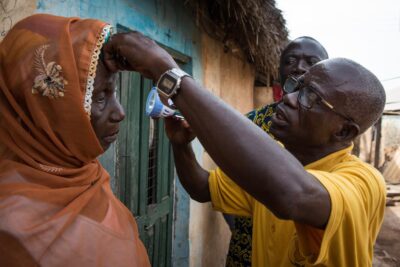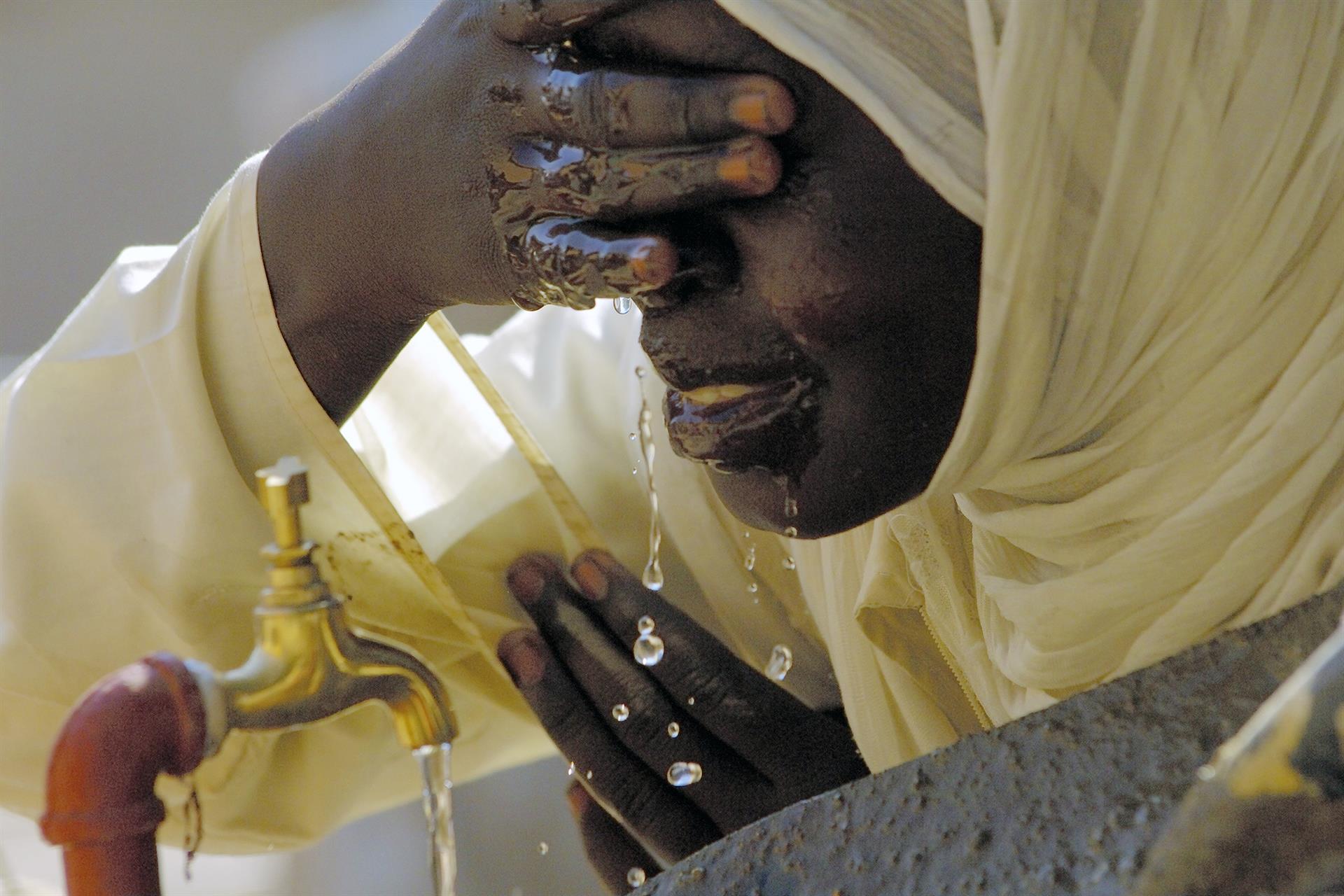Nigeria has reviewed and launched a four-year master plan to guide it’s dealing with nearly 20 neglected tropical diseases (NTDs).
The plan remains in effect till 2027, but the country still ranks top for NTDs as snail fever (bilharzia) and river blindness. It also ranks third globally for lymphatic filariasis.
But how well the country matches its words with action could determine how soon it reduces the incidence of NTDs to pave the way for eventual elimination or eradication.
Dr. Chinwe Chukwudi, with a background in research into antimicrobial resistance and NTDs and a fellow of the African Postdoctoral Training Institute, examines how Nigeria can deal with its burden of NTDs.
With Nigeria accounting for 25% of all neglected tropical diseases (NTDs) in Africa, why is it still difficult for the country to give to NTDs the same amount of attention it gives to non-NTDs?
Yes, Nigeria has a huge burden of NTDs that doesn’t get commensurate attention, and there are several reasons for that.
First, these diseases have been “neglected” worldwide and only started receiving attention in the global health agenda recently.
In Nigeria, public awareness of the NTDs is just beginning to grow, especially among government officials and policy makers.
The level of attention you pay to a problem is largely dependent on your level of awareness of the problem. You cannot solve or try to solve a problem you don’t know exists or how big it is.
This lack of awareness is exacerbated by the fact that the NTDs mostly affect impoverished communities, who often do not have a voice in policy making.
In a country like Nigeria where social injustices and health inequalities are still prominent, policy makers will hardly pay attention to problems that do not directly affect them, or people close to them.
And of course, resources are limited, so what the policy makers consider as bigger problems get more attention.
The first NTD day was on January 30, 2020. Why do you think the world is coming around now to NTDs having a day – January 30 – to drum up awareness?
It has become evident to everyone working in the global health space that none of us is safe until all of us are safe. COVID-19 brought this lesson home very well.
Although the NTDs are poverty-associated diseases, the rich (person or country) cannot be truly safe while their poor neighbors are suffering from these neglected diseases, as some of these NTDs are also transmissible by vectors (which do not differentiate social classes) and/or could be travel-acquired.
So, on January 30, 2012, The World Health Organization launched the first NTD Roadmap and the London Declaration on NTDs, which set out a comprehensive plan for the control, elimination, and eradication of 17 neglected tropical diseases by 2020.
Although this program recorded great achievements, it wasn’t completely successful. This was thought to be underpinned by a general lack of awareness of the NTDs.
In 2019, the Government of the United Arab Emirates, which was part of the London Declaration, announced that it will observe 30 January as the World NTD Day. Hence, partners first informally celebrated World NTD Day in 2020.
On January 28, 2021, WHO launched a new NTD road map termed “Ending the Neglect to Attain the Sustainable Development Goals: A Road map for neglected tropical diseases 2021–2030”, with the addition of 3 more diseases to the NTD portfolio (making a total of 20 diseases).
Global NTD partners marked the celebration in January 2021 by organizing various events worldwide, including the illumination of several iconic buildings to shine a light on the suffering these diseases cause.
On 31 May 2021, the World Health Assembly (WHA) recognized 30 January as World Neglected Tropical Disease (NTD) Day through decision WHA74(18).
This formalized 30 January as a day to create better awareness of the devastating impact of NTDs on the poorest populations around the world, and to call on everyone to support the growing momentum for the control, elimination, and eradication of these diseases.
There is a global call to invest in NTDs. How much of that investment do you suppose should be in molecular biology – a field you are very much invested in?
The achievement of the goals of prevention, control, elimination, and eradication of these NTDs requires a lot of concerted efforts by the various key players in global health. Sometimes, some aspects are given more attention than others, duly or unduly.
However, as I have often argued in some of my recent articles (Molecular research could help Nigeria solve a host of health problems, Consolidating and Upscaling Molecular Research Capacity in Nigeria: On Who’s Account?), neglecting the aspect of molecular research for these diseases will be a cog in the wheel of progress towards the achievement of the elimination programs.
Research in molecular biology provides us with the appropriate tools for disease diagnosis, treatment, and vaccination for appropriate and adequate surveillance/monitoring, control, elimination, and eradication.
For example, when I started working on Human African Trypanosomiasis (sleeping sickness), I realized that one of the greatest challenges here is that of diagnosis.
There are no appropriate diagnostic tools that hospitals can readily/easily use to identify cases. Although implementation officers report no record of the disease in years, a quick field survey shows that the disease is still very much endemic, but surveillance and diagnostic capacity to identify the cases is lacking.
Similarly, there is very little knowledge of the genomic characteristics of many of the NTD pathogens, hence appropriate treatments cannot be initiated where and when necessary.
Hence, there is a strong need for adequate investments in molecular research for NTDs, which is grossly deficient in most endemic areas.
There is a number of declarations Nigeria has signed up to in the past. It now wants to engage disease-endemic nations, partners, and stakeholders to contribute to the development of the Kigali Declaration on NTDs. How much difference do you suppose the Declaration could make in NTDs?
The Kigali Declaration is a laudable commitment, and if followed through, would make a huge impact on the prevention, control, elimination, and eradication of these diseases.
This would continue the great work that started off with the London Declaration, which has attracted a lot of attention to the NTDs from various stakeholders and has led to the elimination of some of the diseases in some countries.
I applaud the government of Nigeria for signing up for the Kigali Declaration. However, we need to match our words with action for the declaration to be successful. If this is done, we should be able to eliminate more of the NTDs from Nigeria by the end of the year 2030.
What difference do you see Nigeria’s NTD Masterplan 2023 – 2027, launched this year, making in the next four years?
There are some low-hanging fruits that could be easily achieved in Nigeria’s NTD Masterplan 2023 – 2027. However, achieving these goals requires strong dedication and action, which goes beyond words and documentation.
I sincerely hope the government of Nigeria would match up that document with the requisite action towards the engagement of all stakeholders for the implementation of the master plan.
With this, we will go a long way towards achieving the control and eradication of some NTDs in the next four years. We can, at least, reduce the incidence and prevalence of these diseases in Nigeria by 2027, which would pave the way for their eventual elimination/eradication.

Dr Chinwe Uzoma Chukwudi(DVM, PhD) is a Cohort 2 Fellow of the African Postdoctoral Training Initiative (APTI), a programme implemented by the African Academy of Sciences (AAS) with the support of the National Institutes of Health and the Bill & Melinda Gates Foundation.
-
Judd-Leonard Okaforhttps://membership.dailytrust.com/author/juddokafordailytrust-com/
-
Judd-Leonard Okaforhttps://membership.dailytrust.com/author/juddokafordailytrust-com/


